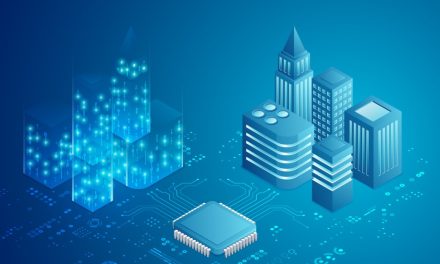The Digital Transformation of Manufacturing in a Post Pandemic World
 By Mattias Andersson, CEO and Founder, MTEK
By Mattias Andersson, CEO and Founder, MTEK
As we move from a state of panic, attention turns to what the post pandemic world might look like and what we have learned. The pandemic caused a perfect storm of disruption to supply first, then to demand, and finally to working practices starting in China and spreading across the globe. In the manufacturing industry, this will change the way we think and the way we do things.
Many lean principles considered fundamental to manufacturing have been challenged during the crisis and ideas around manufacturing geography have been turned on their heads. Where decades ago we constantly heard investors, journalists and analysts asking, “why aren’t you manufacturing in China?”, those same investors, journalists and analysts are now asking, “why are we so dependent on China?”. The truth is we’ve spent far too long depending on labor cost as the measure by which we select a manufacturing geography. It’s time to level the playing field.
What’s needed is a manufacturing ecosystem, manufacturing processes and a supply chain that are all fit for a post pandemic world, where the most important attributes are agility, adaptability and resilience to disruption, not just low cost and low inventory. The Novel Coronavirus (COVID-19) may have been the worst disruption we’ve seen in our lifetimes, but it certainly isn’t the first disruption and it won’t be the last. Some of these issues had already been raised in 2018/19 as we worked through the tariffs that came with the trade war between the US and China. Since we don’t know what will happen next, we need to develop a manufacturing and supply chain ecosystem that is ready for any disruption.
“Companies and the media are busy debating globalization, regionalization or nationalization, meantime they are missing the biggest opportunity – digitalization.”
A manufacturing and supply chain ecosystem appropriate for a post pandemic world has several attributes which have perhaps not been given the attention they deserve in the past, they include:
- Adaptability – manufacturers need to be able to adapt fast and pivot manufacturing when and where needed. The COVID-19 crisis has required companies that make one thing to pivot quickly to make another, such as PPE (Personal Protective Equipment) or healthcare equipment.
- Resilience – in the future supply chains will need to be protected from disruption and have some level of built in redundancy, so when disruption does occur we are ready to adapt effectively and quickly.
- Efficient – manufacturing needs to move away from a world where problems are solved by throwing people at them. While the SMT line has become increasingly efficient, not enough has been done to automate the remainder of the assembly flow. The result has been far too great a dependency on low cost labor and in turn a dependency of low cost manufacturing regions like China.
- Secure – people are increasingly concerned about the security of their supply chains. Those are concerns related to intellectual property as well as the supply chain itself and how that might be manipulated for political ends.
In the post pandemic world, there is already a desire, and in some cases a necessity, to move manufacturing closer to consumption, which might mean moving to geographies where labor costs are higher. This comes from the need to create employment opportunities for displaced workers, to secure supply chains closer to consumption and to add supply chain diversity.
“To ensure manufacturing is ready for the future the entire industry will need to stop talking about digital transformation and start living by the ideals of the Smart Factory, Industry 4.0 or IIoT.”
At a factory level, that means getting on board with the software and automation that will transform efficiency and eradicate the dependency on manual labor, and as a result on low pay regions. At an ecosystem level, it will mean embracing data analysis, the digital twin and ensuring a fully connected manufacturing landscape where data is aggregated, AI is used to manage complexity and where meaningful decisions are made in real-time to create better outcomes.
The good news is that the digital building blocks are available and ready to go into the smart factory. Adaptable automation solutions, like MTEK’s recently released MCell Insertion provide a simple route to digitally transform a process that is currently labor intensive. This digital building block offers a manageable starting point on a smart factory journey with a fast, tangible and measurable return on investment (ROI). Then you simply move to the next building block, and so on. MCell is also fully adaptable with zero touch programming.
Connectivity standards are also available thanks to IPC’s CFX (Connected Factory Exchange) standard, HERMES for machine to machine(M2M) communication, and numerous existing standards like SECS/GEM in the semiconductor industry. And it has never been a better time to apply artificial intelligence (AI) in manufacturing to compute the huge complexity of the data being generated.
It may be a perfect storm of disruption that has led us to the realization that digital transformation is essential, but there is also a perfect storm of technical building blocks that have come together to make the ideals of the smart factory real and attainable.
The future isn’t globalized, regionalized or nationalized, it’s digitized!
Learn more about Mattias and MTEK at www.mtek.se. You can also see Mattias in his recent EMS@C-LEVEL Interview.


 By Mattias Andersson, CEO and Founder, MTEK
By Mattias Andersson, CEO and Founder, MTEK








